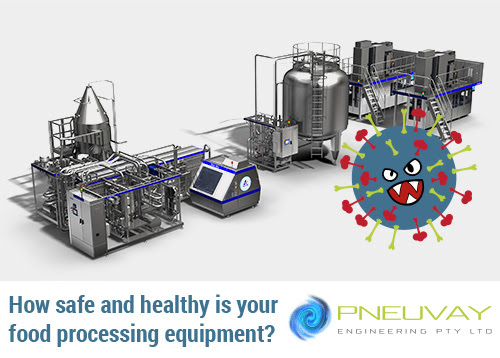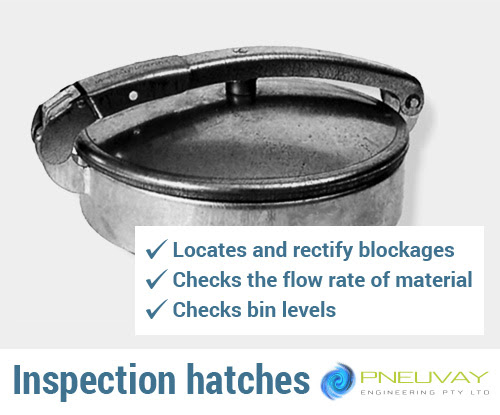Friday, April 29, 2016
In the food processing industry, shiny equipment doesn’t necessarily translate to food safety. Some companies have learned this the hard way — with their consumers paying the heavy price.
Huub Lelieveld, Founder of the European Hygienic Engineering and Design Group or EHEDG, exposed the sad truth in his article about "safety-first" food processing machine design on the
Food Safety Magazine site.
Food poisoning: Who's to blame?
Whenever food poisoning incidents point to the equipment used, it is often difficult to determine if the manufacturer or the food company who purchased it are at fault.
How is that possible?
According to Huub, the manufacturer can say they are not responsible for the proper operation of their equipment. The food company on the other hand can state that it purchased the equipment in good faith that the manufacturer had duly complied making the machine fit all requirements.
Inspectors and auditors cannot clearly be assigned responsibility over the matter since they cannot inspect everything everywhere.
"Hence, even when an incident has resulted in deaths of consumers, nobody is responsible, little is learned and another incident is right around the corner," said Huub.
Lack of knowledge and foresight is dangerous when choosing food processing equipment
Huub states, "Food companies and food processing equipment manufacturers having little knowledge and lack of foresight is unsettling. What’s even more worrisome is that this is despite information on designing and purchasing hygienic equipment being widespread. The issue apparently is that availability of information is different from application of information."
There is a fine line between innocence and ignorance. However in matters like food safety wherein dangers posed to others can involve not only discomfort or pain, but death, shouldn’t education and its application about food safety in different aspects of manufacturing be a must?
Huub has moved that food processing equipment manufacturers, food company staff, and inspectors be duly trained. He argued that they must be educated prior to their job assignment and while performing their job, — "a crucial point but it’s grossly underestimated in many situations," remarked Huub.
Ten principles in hygienic food processing equipment design
Cleanable to the last microbe
"While a piece of food processing equipment may be visually clean, absent of soil or organic matter, it does not necessarily mean that it is microbiologically clean," wrote Joe Stout in his online piece.
Food processing equipment is expected to last a lifetime, and so must their cleanability. They must be constructed in a way that both product- and non-product contact surfaces are sanitised effectively and efficiently.
No food material must be left in the machine to prevent "bacterial ingress, survival, growth and reproduction," said Joe. The Equipment Design Task Force (EDTF) president emphasized that the equipment must be cleanable to the last microbe, which included any unwanted micro-organism that can lead to food spoilage and poisoning.
Material compatibility of food processing equipment
In choosing the right materials in constructing food processing equipment, designers must consider the:
- product to be processed
- environment in which the equipment is going to be placed
- cleaning methods to be applied
- cleaning agents that will be used for sanitation
"Equipment materials of construction must be inert, corrosion resistant, nonporous and non-absorbent," stressed Joe.
Machine manufacturers must ensure that their equipment's surface is impervious to the materials and conditions to which it is exposed.
Avoiding even minute damages to the equipment caused by the incompatibility of the materials used to make it will help "minimize areas where micro-organisms can hide, live and survive."
Maintenance and inspection of food processing equipment
All parts of food processing equipment must be accessible not only to its operators, but to staff in-charge of cleaning and to authorities tasked with inspection.
In fact according to Stout, accessibility should be easily done by an individual without the use of tools.
Manufacturers must design their equipment for assembly and disassembly to optimize cleaning.
Stout cited four elements that food processors use to sanitize their equipment:
- Mechanical action
- Temperature
- A chemical that breaks up proteins and fats
- Time
He added that easily accessible equipment increases the success rate of the said protocols that food companies employ in sanitizing their machines.
Liquid-free food processing equipment design
Liquid, either from processed products or elsewhere, should not collect in any part of the equipment. This requires the food processing equipment design to be "self-draining."
Apart from being a growth point or breeding ground of micro-organisms, foreign material can later develop as the liquid evaporates and leaves a hardened crust behind.
Airtight hollow areas in food processing equipment
Frames, rollers and other types of hollow areas of equipment must be airtight or hermetically sealed. Caulking will not suffice since there can still be a chance that unfilled cracks can store liquid and violate the aforementioned principle.
For the same reason, drilling pieces of equipment such as bolts, brackets and mounting plates must not be allowed.
Penetrations onto the surface of equipment can allow organic matter to "get inside, leak out and re-contaminate the environment," said Joe.
An example the EDTF president gave is when manufacturers place a name tag on a piece of equipment using a pop rivet. A pop rivet is a kind of unsealed surface breaker that allows water to get in.
Joe reported however, that "because of the EDTF's work, many designers are eliminating the pop-riveted name tags today."
No "special" space for germs to hide
Another way to help ensure zero germ-breeding ground in machines is to free them from "special" places where they can hide.
"Food processing equipment should not have harbourage points." Stout added that all welds must be continuous and fully penetrating.
Should a food company need to modify the equipment in their plant, they should make sure to retain the original welding done by the manufacturer, and take care with the modifications they will make.
From ensuring that the equipment must be cleanable to the last microbe to it not having any breeding place for bacteria—these six tenets of hygienic equipment design to start with can take safety measures to a stricter level of protection in the food processing industry.
More helpful information on manufacturing sanitary equipment can be found in the
next blog. Follow our social profiles today for you to be updated:
All News |
Back to Top



